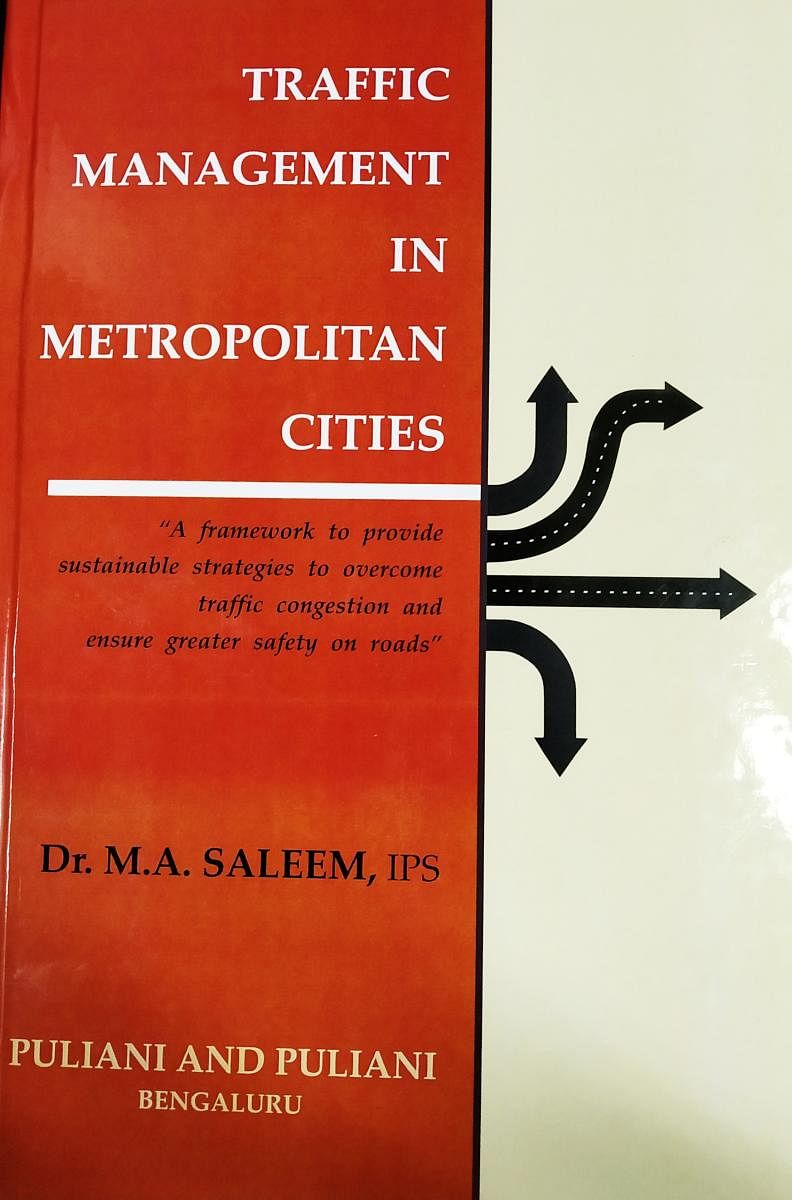
The bizarre descent of Indian cities into magnets of unmitigated planning chaos is well-documented. But nowhere is this manifest more dramatically than on our urban roads — the inglorious mess fuelled by an explosion in vehicles and the abject failure of infrastructure to catch up.
Trapped in this daily grind, any attempt to untangle this disorganised labyrinth could get problematic. Yet, a new book by senior IPS officer Dr M A Saleem dives deep in and swims against the tide to suggest a framework for sustainable strategies that could potentially de-congest our cities and make our roads safer.
In ‘Traffic Management in Metropolitan Cities,’ Saleem’s perspective is decidedly pan-Indian. But to pin down strategies to specifics, the former traffic top brass lets his domain of expertise — Bengaluru — dictate the rules.
His vast experience as the city’s former traffic chief offers him enough room to debate and strategise with proven authority. In an informal chat with Sunday Herald, Saleem deconstructs the complexities of vehicular overload, public-private transport mismatch, infrastructure gaps, planning and more.
On historical roots of the traffic overload: The city’s growth was the highest in the 1970s when PSUs such as BEL, BHEL and BEML emerged, generating a massive employee population. But it did not generate traffic as transport needs were not high. Housing colonies came up close to the factories. Besides, the factories had their own buses.
But after the 1990s, the emergence of the IT industry sparked a big increase in housing and transport requirements. The IT firms were located in the city’s South East areas that were traditionally not residential. This created a big transport need.
However, in response, mass public transport received only low investment. People were forced to buy their own vehicles and banks were too willing to give loans. Nobody anticipated this growth.
On radial routes and forced CBD travel: Bengaluru has a radial network with eight arterial roads converging into the city centre. Since the Ring Road is poorly imagined, people are forced to travel unnecessarily. For instance, to get from Jayanagar to Malleswaram or from Indiranagar to Vijayanagar, you have to pass through the city centre, triggering unwanted congestion.
There is a lack of coordination between multiple stake-holders. There is no unified authority for traffic management. Each agency has its own priorities.
On giving a hyper-boost to public transport: In Mumbai, 82 per cent of the population travel in public transport, while only 45 per cent opt for it in Bengaluru. To increase this to 75 per cent, huge investments are required. The city needs at least 12,000 buses and projects such as the Metro and commuter rail should be completed fast.
BMTC bus fares should be subsidised like in many cities across the world. An integrated system that links multiple modes of public transport and a common fare system will encourage more people to switch from personal vehicles.
On integrating land use with transport planning: This integration will help reduce congestion in the central business districts of cities. In Delhi, for instance, residential, industrial and commercial areas are separate. But Bengaluru, with its mixed land use, poses a huge problem.
Consider the city’s Indiranagar area. People come here for eating, shopping, schools and offices, causing a natural congestion. At least in the new areas, the segregation of residential and commercial parts should be the norm.
On road safety, road engineering and structural strategies: Road safety is a major issue. Road accidents claimed 733 lives in the city in 2019 and these were mostly pedestrians and two-wheeler riders. The city roads are not pedestrian-friendly. Motorists do not respect signals.
People should walk more. However, aspiration for vehicle ownership is high. That will continue till they own a Mercedes. Only then will they switch to a cycle.
To avoid accidents and congestion, structural interventions in road engineering are critical. Residency Road had a mix of four lanes, three lanes and two lanes — a recipe for traffic chaos. But after the TenderSURE design with uniform road width, the congestion has reduced.
Conceptualisation, development and enforcement of projects like the Bengaluru Traffic Improvement Plan (B-TRAC), Safe Route to School and Local Area Traffic Management Plan, through multi-agency coordination in Bengaluru, have been successful in the past. These can be models for other metropolitan cities.